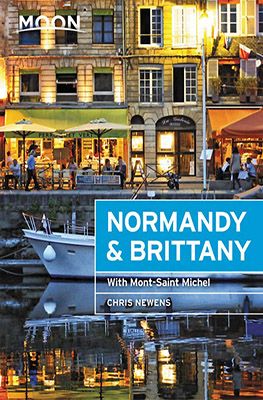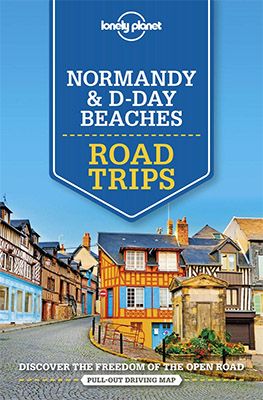We’ve already done the most beautiful hikes in Normandy before. But this summer, we jumped on our bikes for a stunning trip through the department of La Manche. Here, we followed part of the popular Vélomaritime, a coastal cycling route from Dunkirk to Roscoff in Brittany. In this blog, we describe our cycling adventures from day to day. We start our cycling holiday along the Vélomaritime in the charming port city of Cherbourg. Next, we visit some D-Day memorial sites, including landing beach Utah. After this, we follow the beautiful Vire Valley to the hilly and nature-rich Mortain-Bocage. We conclude our fantastic holiday at the iconic Mont-Saint-Michel.
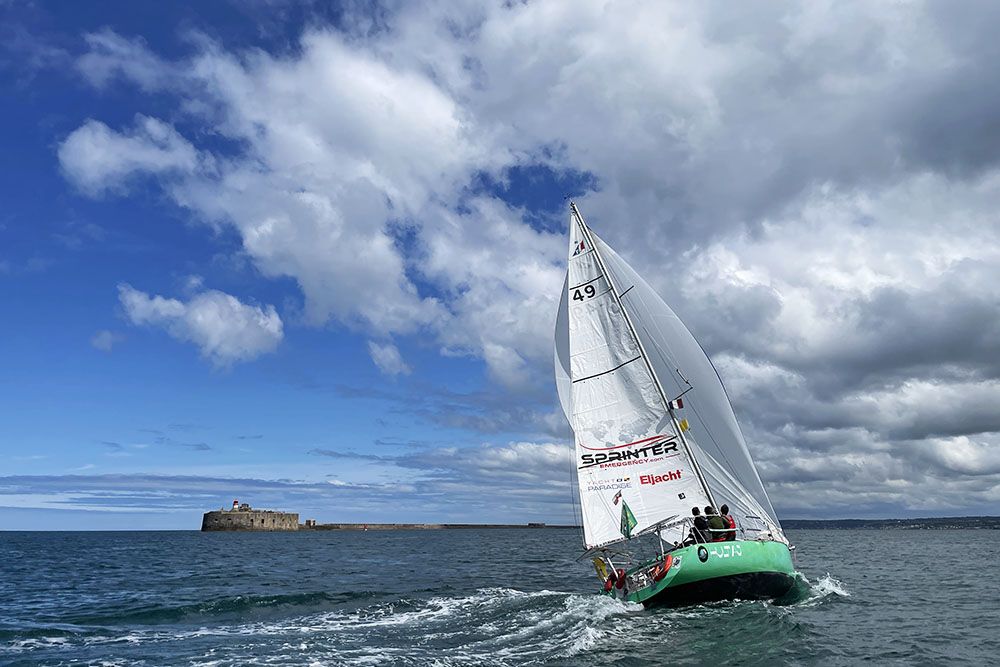
The Vélomaritime in a nutshell
The Vélomaritime (also called EuroVelo 4) is a 1,500-kilometre cycling route along the coastline of Normandy and Brittany. Only on the Cotentin peninsula in Normandy does the route make a small loop inland. The vast majority of the Vélomaritime goes on quiet roads or dedicated cycle paths, and through nature as much as possible.
The route starts in the charming fishing town of Roscoff in Brittany. From there, the Vélomaritime takes you along beautiful coastal landscapes such as the Côte d’Albâtre and the Opal Coast, up to Dunkirk. You will pass beautiful sandy beaches, steep cliffs and idyllic bays (including the Bay of Somme). But also quaint towns and picturesque villages such as Mont-Saint-Michel. And you’ll visit many historical sites along the way, including the landing beaches of the Allies during World War II.
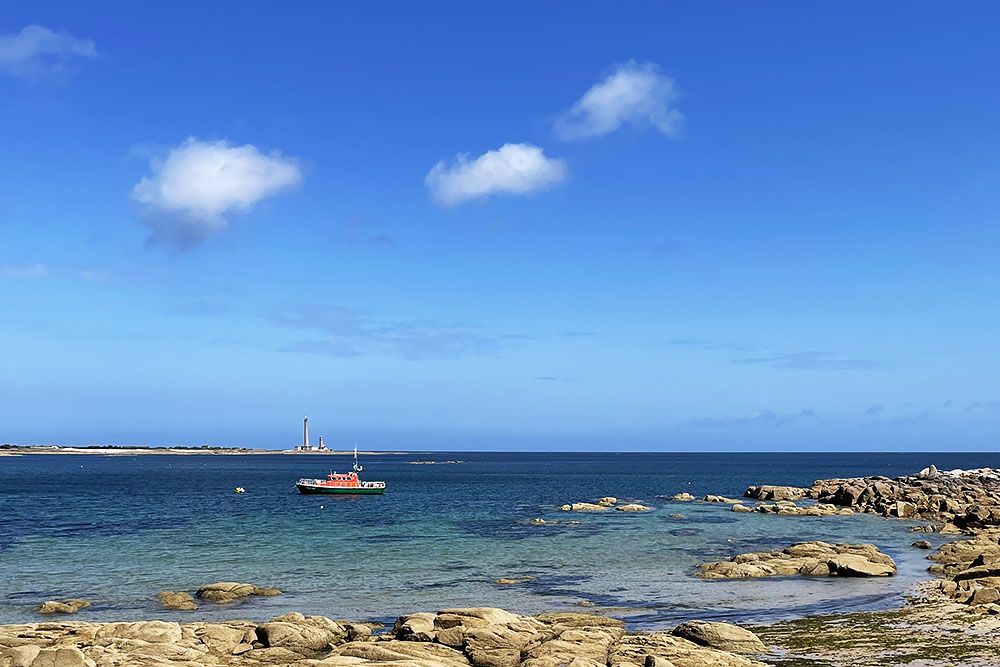
Our cycling holiday on the Vélomaritime through La Manche – from day to day
The Vélomaritime cycle route consists of 36 stages ranging from 12 to 45 miles. On the Cotentin peninsula, there are another seven bonus stages. Our multi-day cycling tour starts with a bonus stage, namely the one from Cherbourg to Saint-Vaast-La-Hougue. On day 2, we cycle two bonus stages. We then set course first to Utah Beach, and then to Carentan-les-Marais. On day 3, we do the stages Saint-Jean-de-Daye, Saint-Lô and Pont-Farcy in that order. The next day, we cycle via Vire Normandy to Mortain-Bocage. On day 5, our last day of cycling, the stages towards Saint-Hilaire-du-Harcouët, Ducey-Les Chéris and Mont Saint-Michel are on the programme.
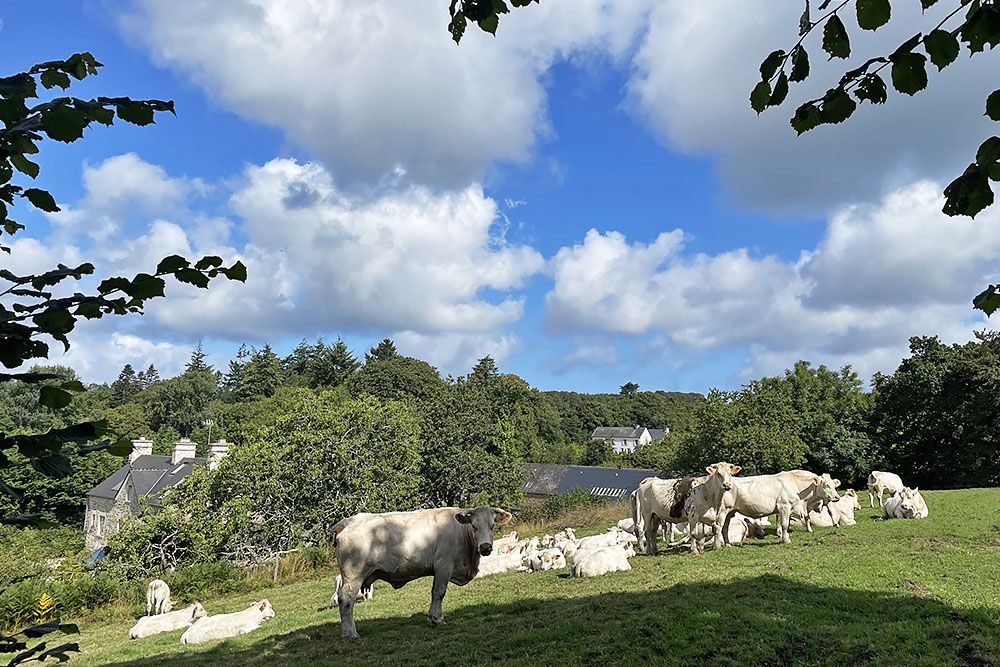
Day 1 across the Vélomaritime – from Cherbourg via Barfleur to Réville
Though it rained hard during the night, we are in for a treat this morning. It is gloriously sunny and we have the wind at our backs as we leave Cherbourg. Right outside the city, the urban landscape gives way to a friendly rolling and wooded landscape.
Along the way, we pass imposing country houses and the magnificent Ravalet castle. The route then takes us through picturesque farming villages where time has stood still for decades. Like the small village of Vast, where the local épicerie (grocer’s) looks like something straight out of a Louis de Funès film.
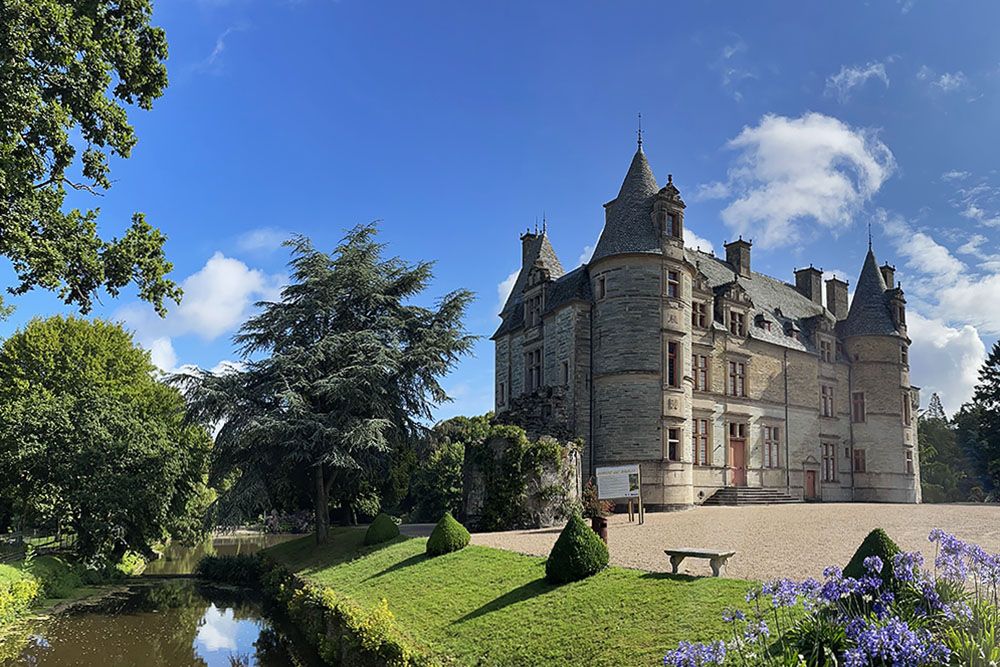
A little later we reach the D902, the provincial road from the south to Barfleur. According to the gpx, we should cross here and continue towards Montfarville. Earlier, however, we were given the tip to visit Barfleur too, if we had time. We decide to deviate from the Vélomaritime for a while. Soon after, we arrive in the particularly charming harbour village. It is market time and pleasantly busy. A perfect stopover, really, for a delicious lunch on a terrace.
From Barfleur, we also cycle around to the impressive, 19th-century Gatteville lighthouse. We climb the 75-metre tower for an unlikely view. We then set course for today’s final destination: the campsite in Réville. For dinner, we stroll to the nearby beach club Goéland 1951. We’re in luck: just tonight a good DJ plays trendy lounge music! We couldn’t wish for a better way to end this first, delightful day of cycling.
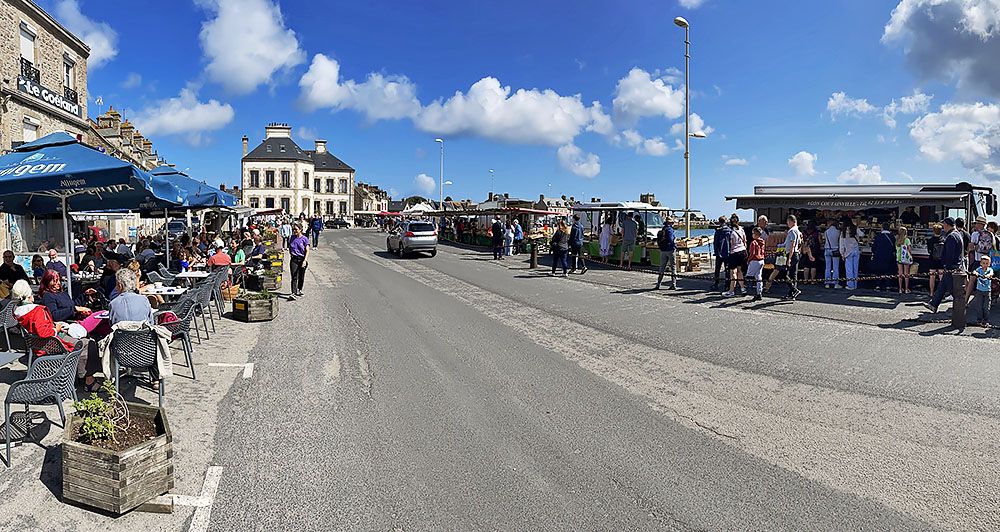
Day 2 on the Vélomaritime – from Réville via Utah Beach to Carentan-les-Marais
Today we take a trip through time. We go back to 6 June 1944, a day that will go down in history books as D-Day. On this day, the military operation Overlord took place. The Allies then set foot on five beaches in Normandy. The great amphibious invasion marked the beginning of the liberation of Western Europe. A visit to Utah Beach and some museums, among others, is planned. Given our interest in this part of recent history, we are greatly looking forward to our second day of cycling.
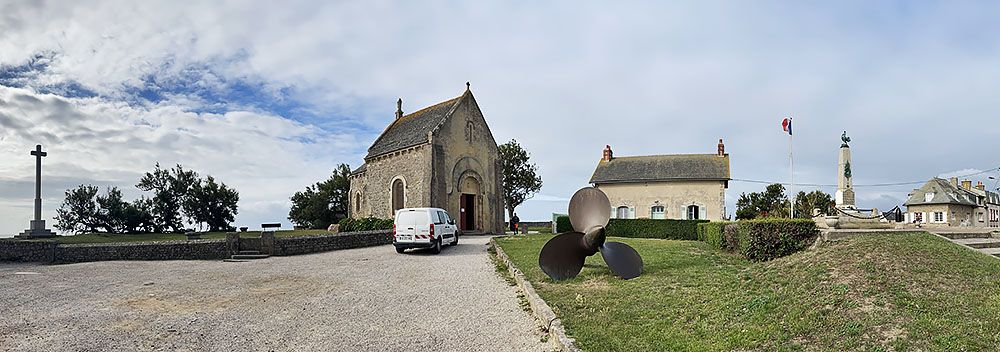
On our way to Utah Beach, we first pass through Saint-Vaast-la-Hougue. This historic town has the third-largest fishing port in the department. Saint-Vaast is also known for its large oyster farm and for the island of Tatihou, a true bird paradise. Unfortunately, today’s busy programme does not allow a visit to Tatihou. So, we quickly cycle along the salt marsh-like coast to the small coastal town of Quinéville. As the weather suddenly turns and we are expected to have a rain shower in no time, we seek shelter. We find this in a small but absolutely interesting museum: the Second World War Museum. There, we get a good impression of how the village lived through the period of occupation.
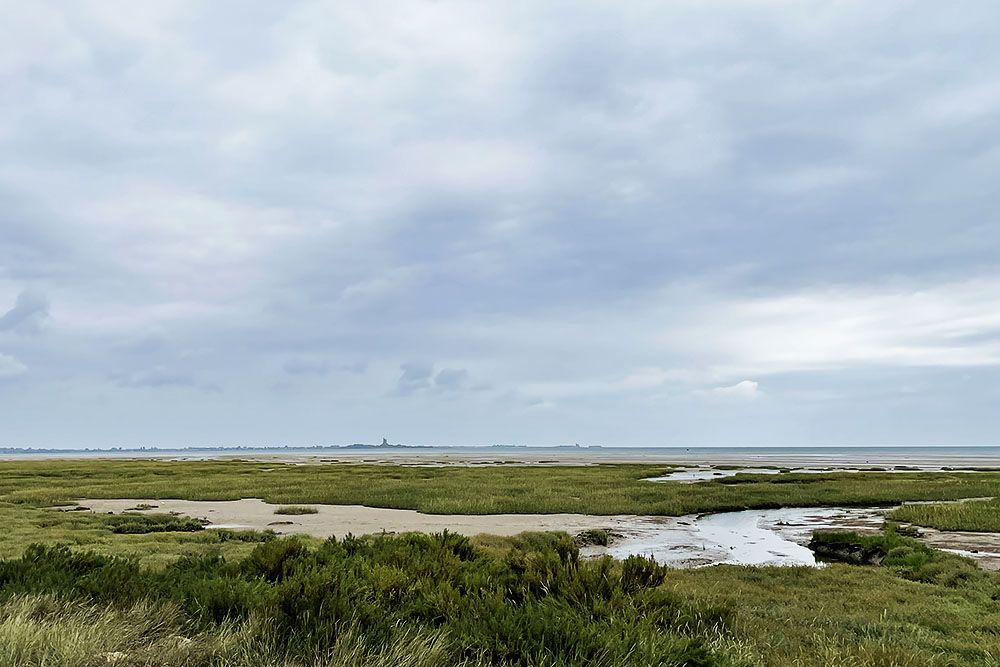
Sainte-Mère-Église
We continue our route towards Utah Beach and still pass the Crisbecq Battery Museum. This artillery battery played an important role during the Utah Beach landings. We do not stop there but cycle on and soon after turn off to Sainte-Mère-Église. This 11th-century village is not directly on the Vélomaritime. But since you have the unmissable Airborne Museum here, we are happy to ride around the block. This museum is dedicated to the paratroopers who were dropped here the night before D-Day. We dive right into the excellently set-up museum and – driven great appetite – come out only after an hour and a half.
On our way to a suitable lunch spot, we walk past a large church. We see a paratrooper hanging in the tower. The story behind this paratrooper appears in the 1962 film, The Longest Day. The American parachutist survived his plight at the church tower by playing dead hanging limply from the tower. We are not the only ones with smiles on our faces. In the church square, we see many tourists, especially from America, happily looking at the puppet in the tower.
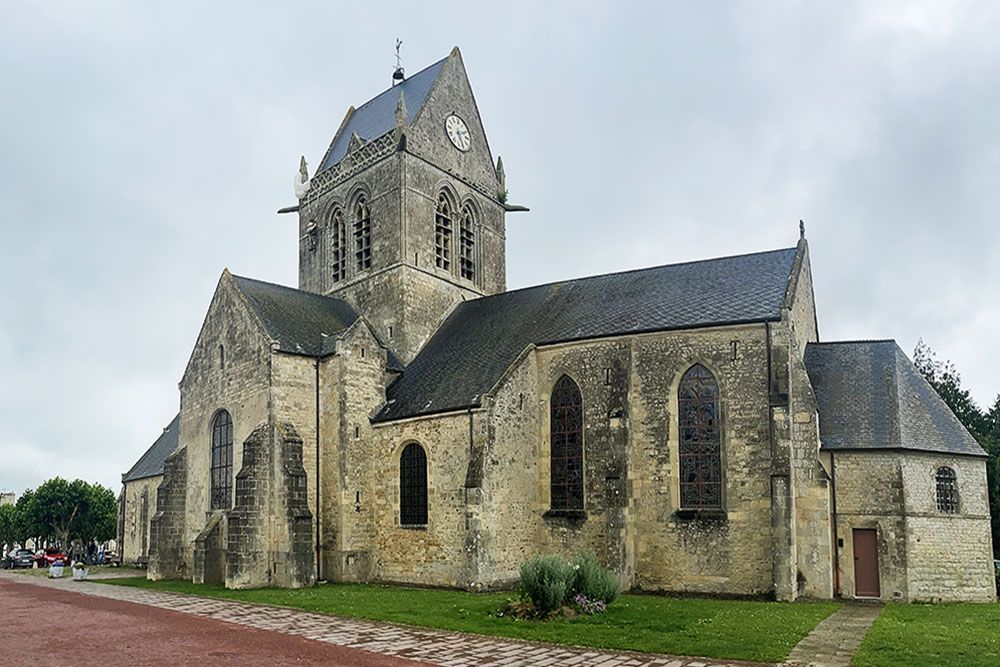
Utah Beach
After a delicious lunch in the cosy, particularly beautifully located Les Ecuries, we walk back to our bikes. In the meantime, it has got quite sunny. This makes the remaining 10 miles to Utah Beach a lot more pleasant. Once at the beach, we lock up our bikes securely and first visit the dune with the monument. Gazing at the sea from the top of the dune, we imagine what it must have been like for the Americans at the time. Many soldiers lost their lives on this beach that day. Now we only see young families there with smiling, playing children. We cannot imagine a greater contrast.
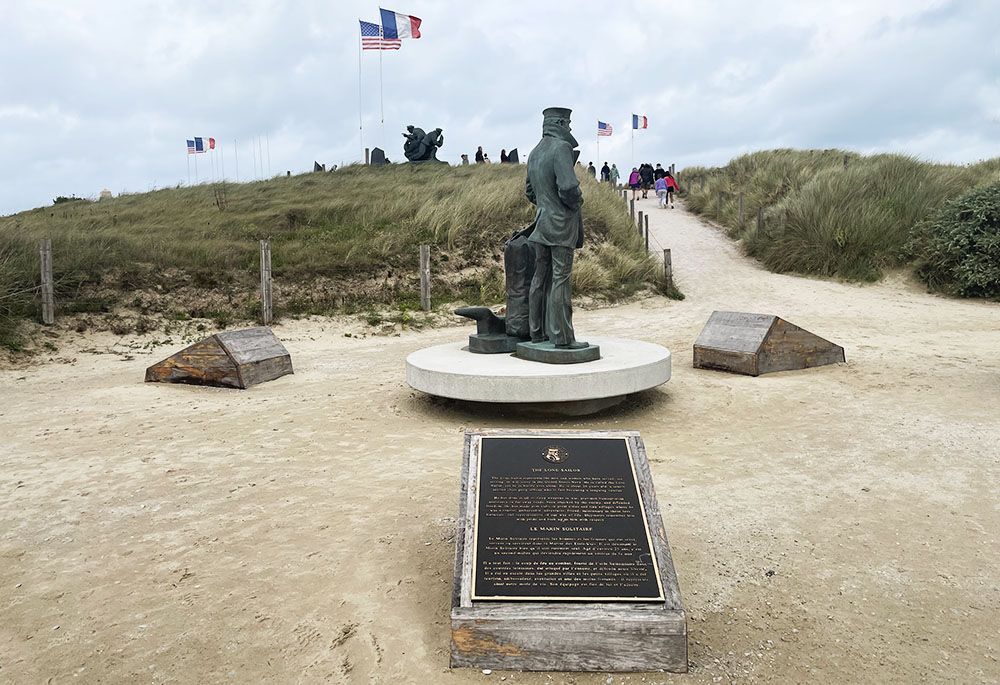
After this, we visit the Musée de Utah Beach. In the hours that follow, we learn an extraordinary amount about D-Day: the years of planning that preceded the operation, the moment itself, and what took place in the months that followed. Our visit to the beach and the museum leaves a deep impression. Busily musing, we get back on our bikes for our last ride today, which is to the beautiful country house Domaine de Utah Beach. Here we spend the night in opulence and enjoy a royal three-course dinner. By the way, we will have an extensive blog on special memorial sites around D-Day later.
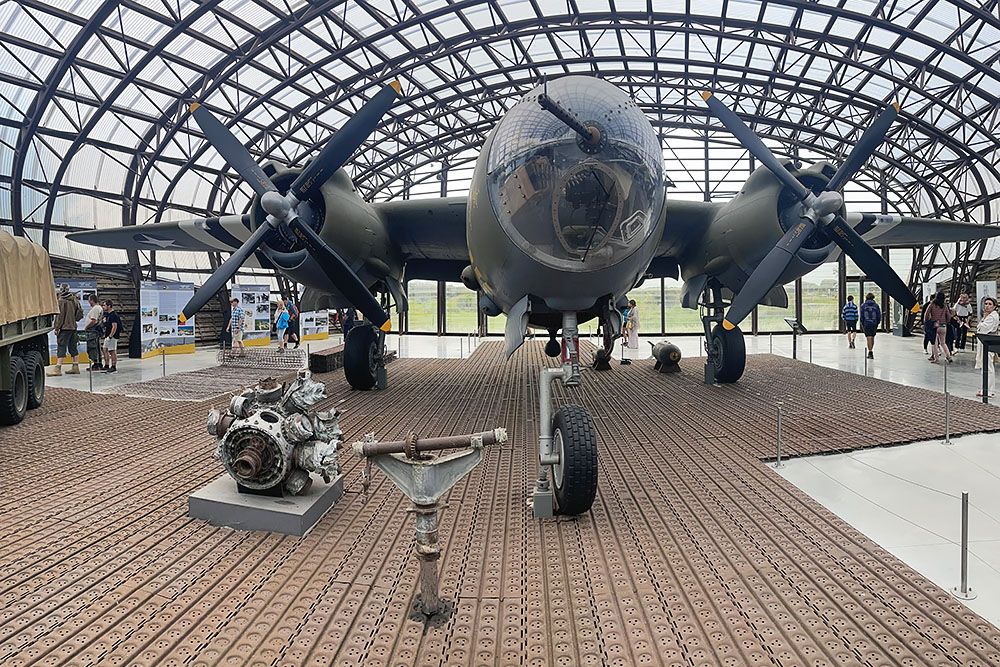
Day 3 across the Vélomaritime – from Carentan-les-Marais to Pont-Farcy
According to the weather forecast, we get a rainy day today. Of course, we would have preferred this to be different. But we resolve to just pay attention to the beautiful things we will undoubtedly see today. In the restaurant, we have an extra special breakfast and then pack our things. We leave the luggage at reception for the luggage service. And we put extra dry clothes in the waterproof panniers this time. We’re ready!
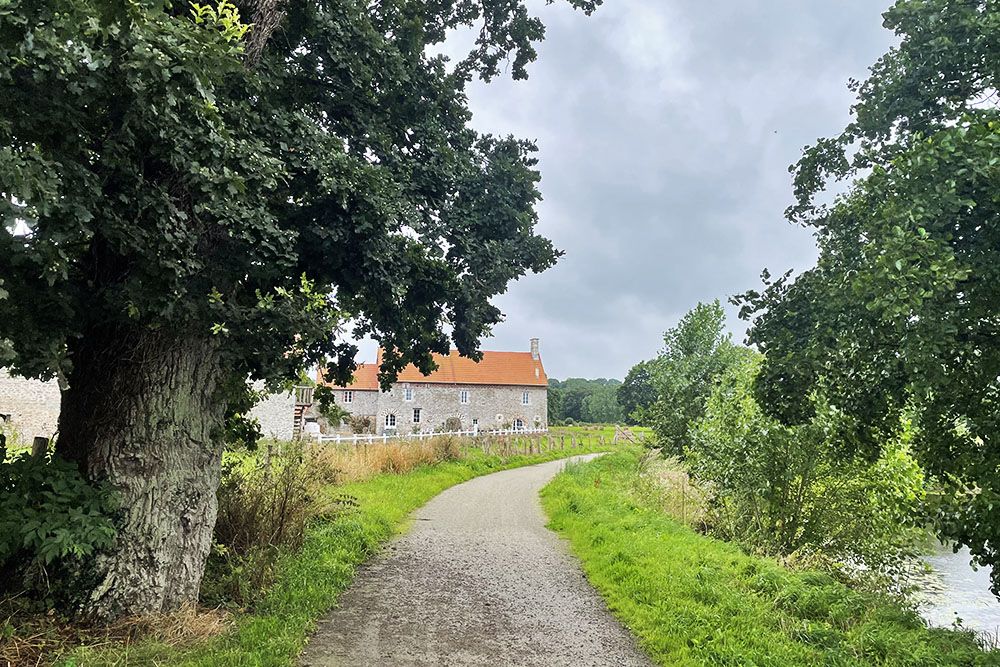
In the morning, the route takes us through the unique natural park “Marais du Cotentin et de Bessin“. This (especially today) wetland is a habitat for a great diversity of birds. There are also many rare plant species here including several species of orchids. Depending on the season, you can go on beautiful walks here. In winter, a large part of the area floods. This is also where the Allied paratroopers found out in June 1944 when they were dropped beyond the Atlantic Wall. Unfortunately, many drowned back then. Incidentally, the regional nature park is as big as the entire province of South Yorkshire! So, it takes a while before we arrive at the beautiful River Vire. We follow the river through a beautiful hilly landscape to Saint-Lô.
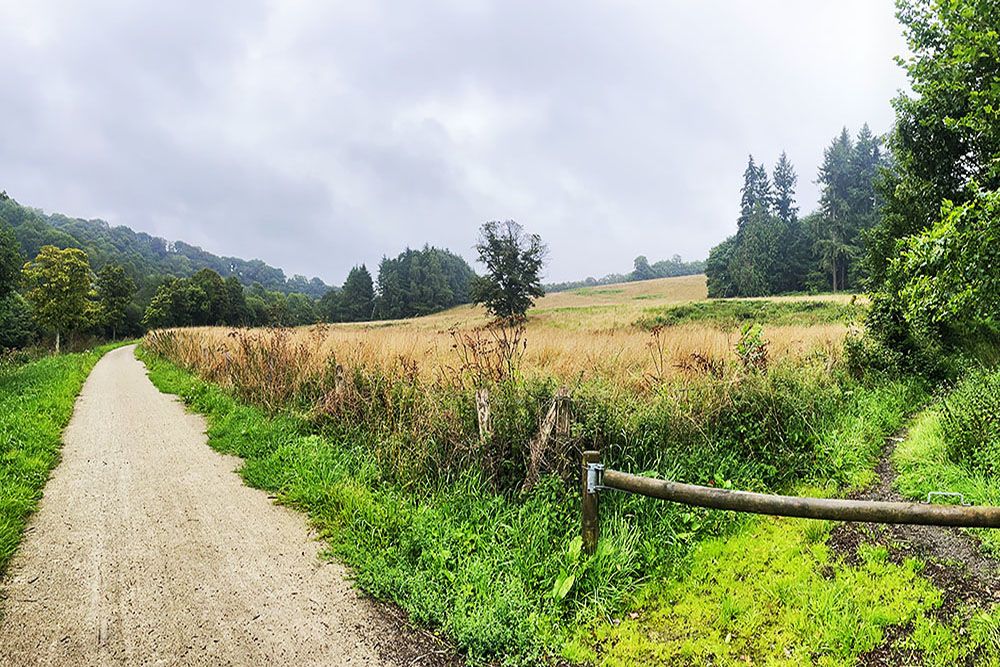
The last mile is the longest one
This beautiful old town was badly damaged in 1944 but later excellently restored. While enjoying a hot lunch in dry clothes, we have nice views of the old city walls. As we still have many miles ahead of us, we don’t head into the old town after lunch. Instead, we jump back on our bikes for the last part of the route for today.
Fortunately, the expression “the last mile is the longest one” does not apply during this stage. The weather picks up and the landscape becomes more and more beautiful. We follow the Vire until we reach Pont-Farcy, which meanders through a beautiful green Ardennes-like landscape. Earlier than we expected, we arrive at our spacious chambre d’hôte. After a refreshing shower, we join the parents of the accommodation owner for a simple but hearty meal. We are delighted by the regional cuisine! Almost two hours later, we seek our beds, tired but happy.
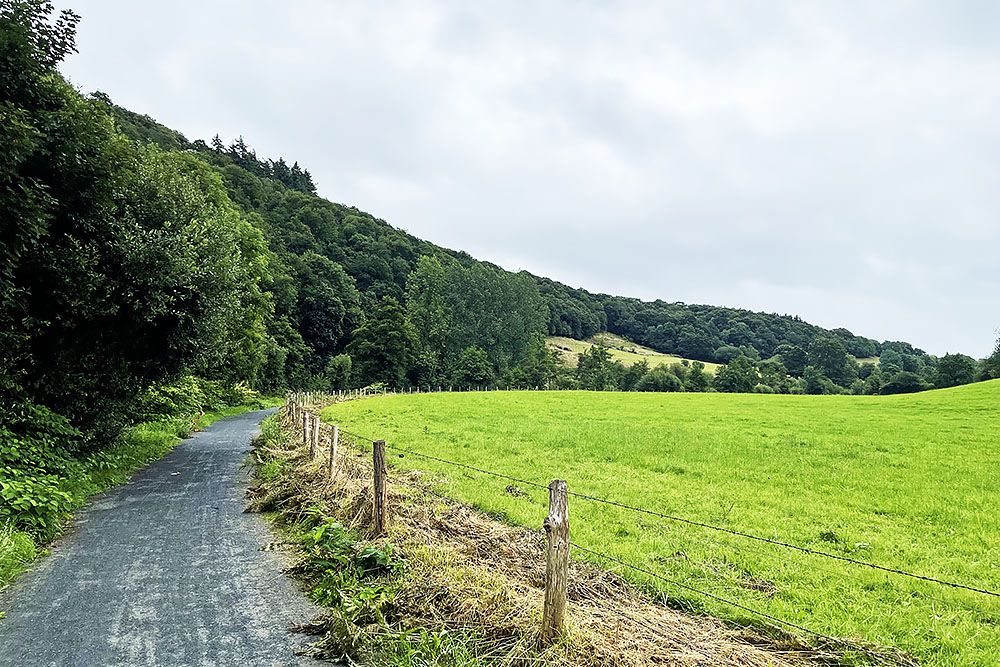
Day 4 across the Vélomaritime – from Pont-Farcy to Mortain-Bocage
Today a 50-mile stage through the Calvados department is on the programme. We start along the Vire but leave the river after only a few miles. The route takes us further through a particularly idyllic, typically Norman landscape. We enjoy every inch of cycling past rolling meadows, forests and picturesque small farming villages.
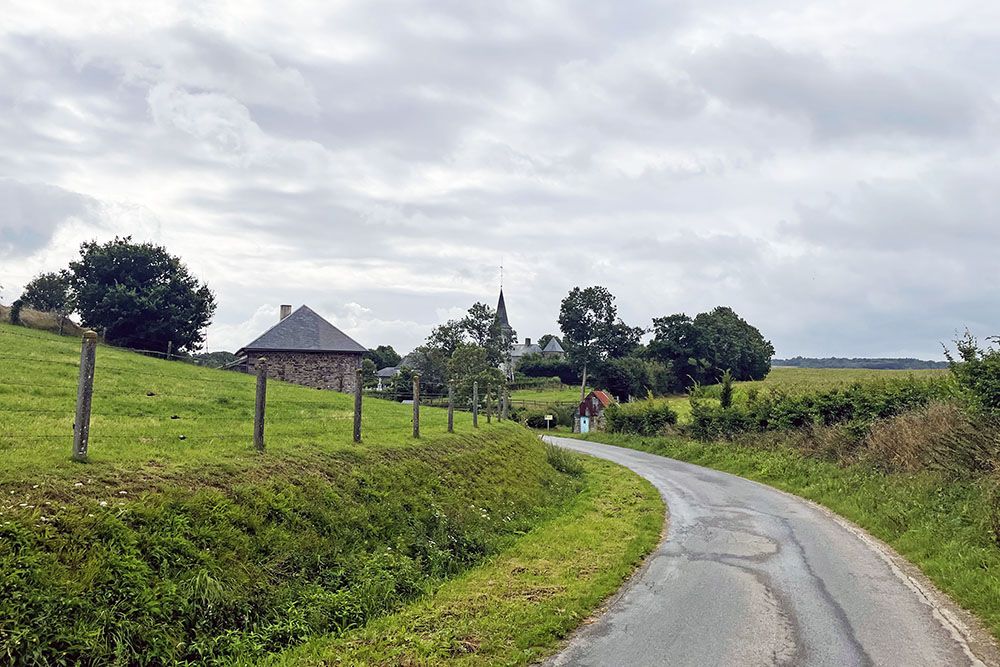
Viaduc de la Souleuvre
Next, we reach the Viaduc de la Souleuvre: a former railway bridge over the Vire valley. The bridge was built in the late 19th century by none other than French engineer Gustave Eiffel. The viaduct was over 360 metres long with a maximum height of 62 metres. Before World War II, about 15 trains a day crossed the bridge. In 1944, the viaduct was partly damaged but repaired soon after. When the railway closed in 1960, the bridge fell into disrepair. The railway itself was demolished but the five large stone pillars were preserved.
Since 1990, you can bungee jump from the tallest pillar. The site has since grown into an amusement park with other spectacular activities. There is also now a viewing platform with an unlikely view of the Vire valley. Partly because everything looks so perfect, we are seriously tempted to take the plunge. Yet we end up refraining. But immediately after starting the last stage, we already start regretting it. Why didn’t we do it? There is no better way to conquer your fears!
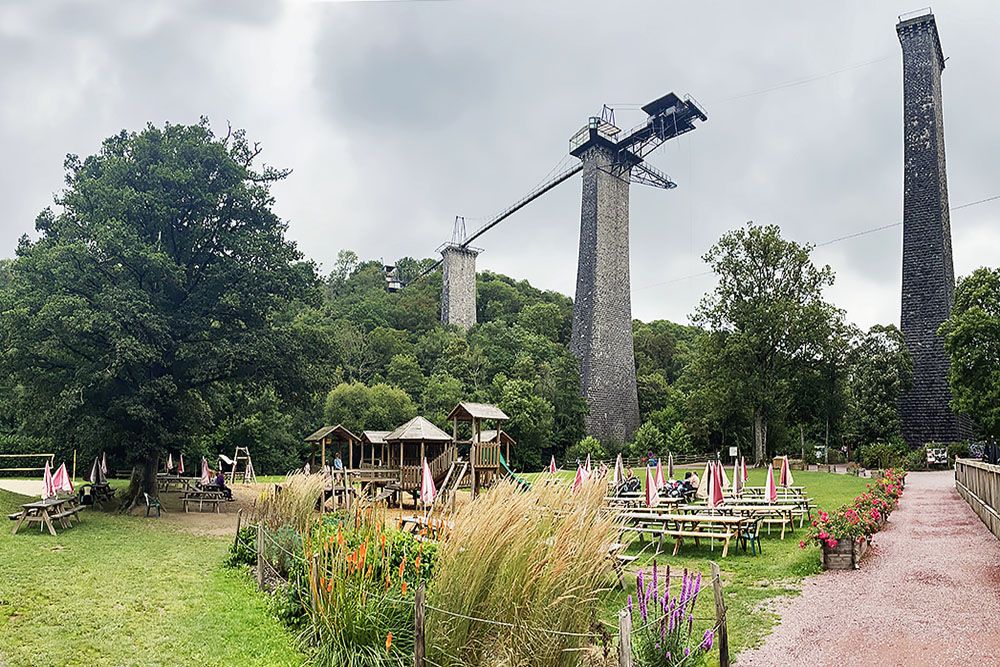
Via the voie verte to Mortain-Bocage
Today’s final stage is almost entirely on a “voie verte”: a path where no motorised traffic is allowed. The path we are cycling on now follows the old railway line dating from the late 19th century from Vire to Fougères. This has the advantage that the differences in altitude are hardly noticeable. It is clearly a popular cycling route: the number of cyclists with full packs can no longer be counted on both our hands. Given the enthusiasm with which we are greeted, we assume that they enjoy the beautiful route immensely, just as we do.
At the end of the afternoon, we arrive in the high-altitude village of Mortain-Bocage. We check into our comfortable chambre d’hôte and stroll through the old town to our restaurant. Over a delicious meal and a good glass of wine, we make a promise. We still regret not doing the bungee jump. So, we agree to do so at the next opportunity. No more excuses.
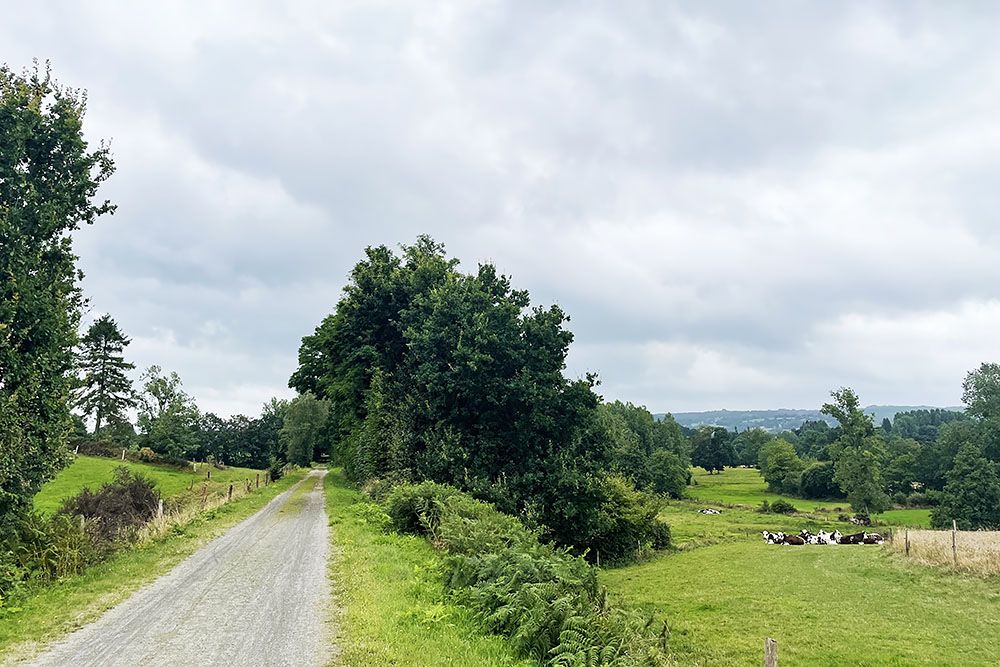
Day 5 across the Vélomaritime – from Mortain-Bocage to the iconic Mont Saint-Michel
A severe storm is brewing, reaching our final destination as early as early afternoon. As wind force 9 to 10 is forecast, today’s bike ride is cancelled in agreement with Normandie Tourisme (at whose invitation we are in La Manche). Instead, the cycling specialist from the Mont Saint-Michel tourist office will take us to the island in the afternoon.
On the one hand, this is a disappointment. We would have liked to complete our cycling holiday in full. Staying on Mont Saint-Michel would then be a really worthy conclusion to a memorable trip. On the other hand, we now have the chance to explore the Mortain-Bocage area on foot. And this is definitely not a punishment as the stunning, almost mountainous landscape offers unprecedented hiking options.
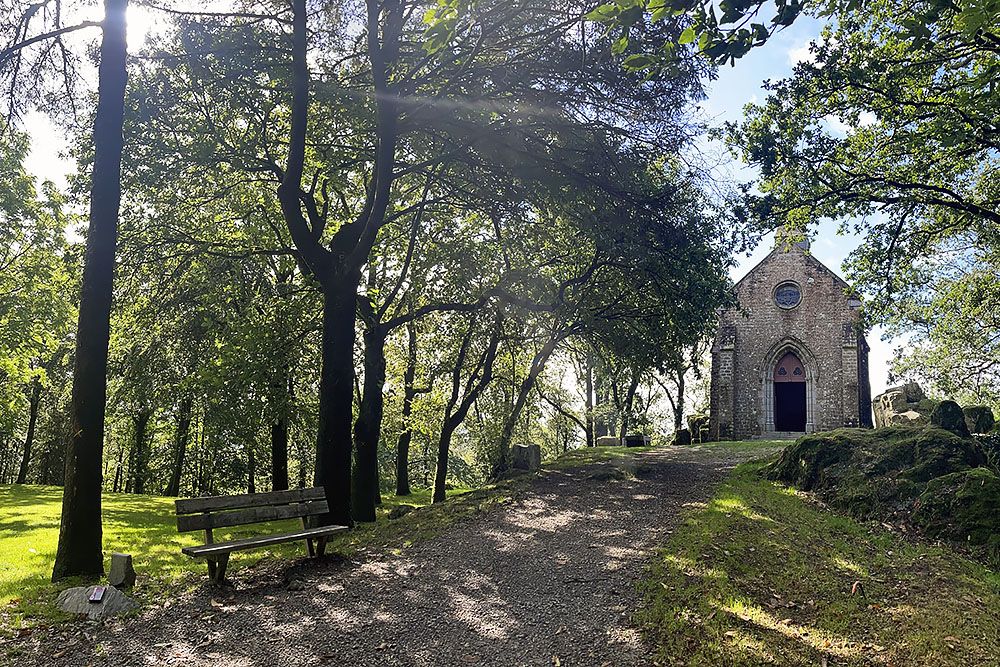
Chapelle Saint Michel and the waterfalls of Mortain
The helpful owner of our accommodation gives us some good tips. For instance, we should definitely visit the chapel of Saint Michel. But also the waterfalls of Mortain are not to be missed. Using Google Maps, we put together a walking route and away we go!
The first attraction on our route is the chapel of Saint Michel, situated on a rock at an altitude of over 320 metres. From here, we have a magnificent view. We can even see Mont-Saint-Michel in the distance! This view had an important strategic advantage in World War II. For this reason, a bitter battle took place in August 1944 during a German counter-offensive. Many soldiers lost their lives in the process. At the small chapel there is therefore also a memorial.
We walked on to first the big and then the small waterfall of Mortain. We expected a babbling brook flowing with some splashing from a rock. But nothing could be further from the truth. Probably thanks to the recent heavy rainfall, both are serious waterfalls! Together with many other hikers, we take photo after photo. A tip: should you have to choose between the two due to lack of time, go to the small waterfall (unless it has been dry for a long time). The immediate surroundings of the small waterfall are downright stunning!
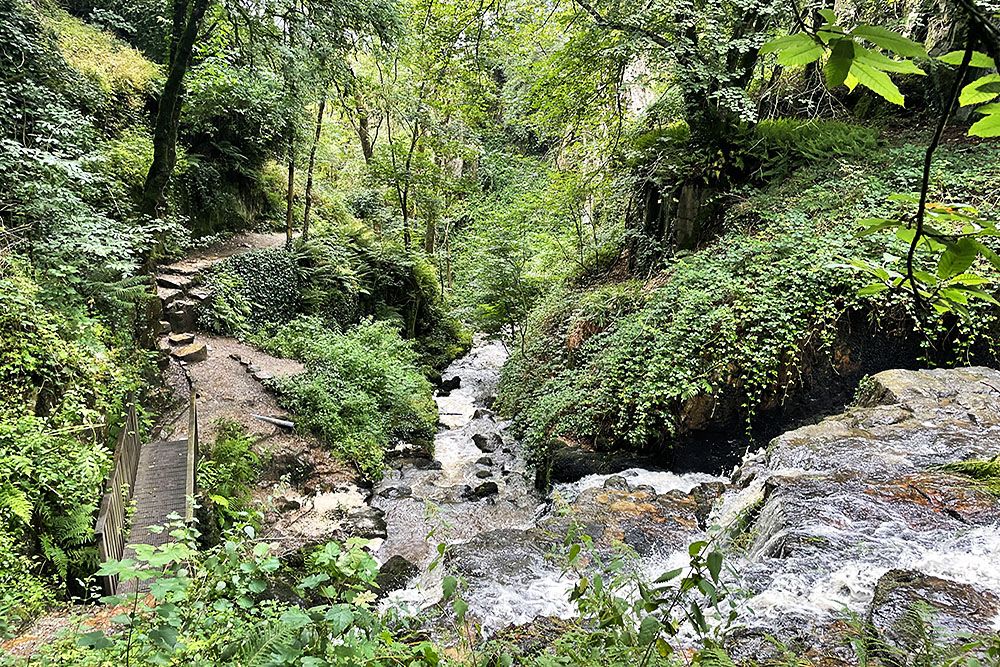
Farewell to Normandy
After a surprisingly good lunch at the local sports pub in Mortain, we walk to the Mont Saint-Michel tourist office. Then, very luxuriously, we are taken by car to the tourist village of Beauvoir. No further, as only shuttle buses are allowed onto the bridge to the island. We decide to brave the storm while walking. We are not the only ones with the bright idea of getting a breath of fresh air: hundreds of day-trippers walk towards us, weary but happy.
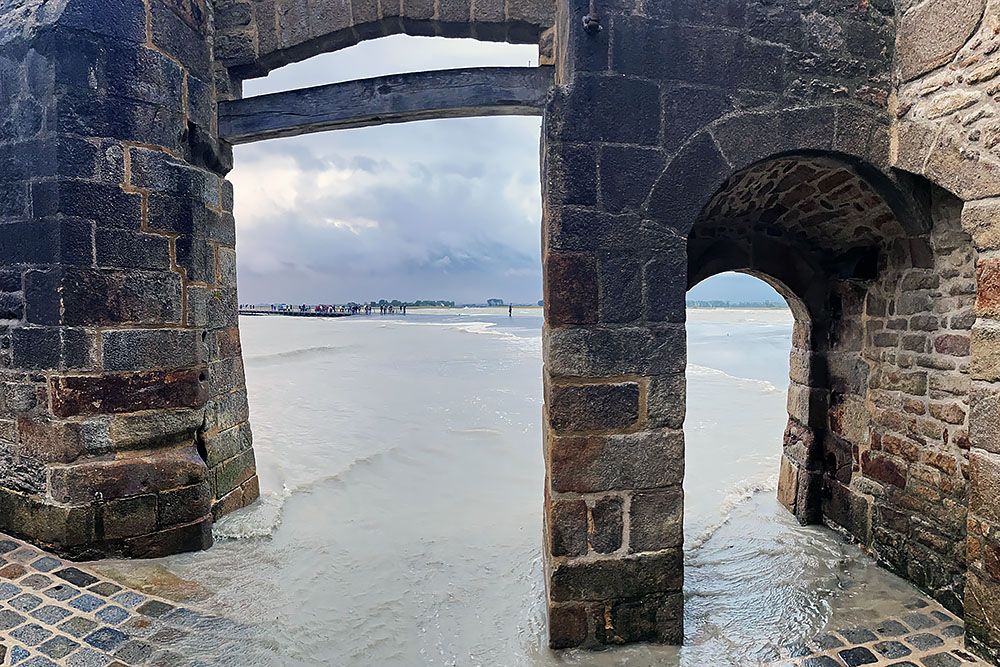
We are very much looking forward to our stay on the island. We have been there before, but that was during the day and therefore very busy. Now we are going to experience the “mascaret” (tidal bore) there. What’s more, we’ll spend the night there. We are curious to see if that will change our perception of the tourist attraction. You can read our findings in our separate blog on Mont-Saint-Michel.
This brought us to the end of an adventurous and memorable cycling holiday. We got to know the beautiful Normandy that stole our hearts in a different way from our hikes. And despite one day of rain, we wouldn’t have missed this trip for anything. We therefore hope to cycle the remaining stages of the fantastic Vélomaritime at a later date!
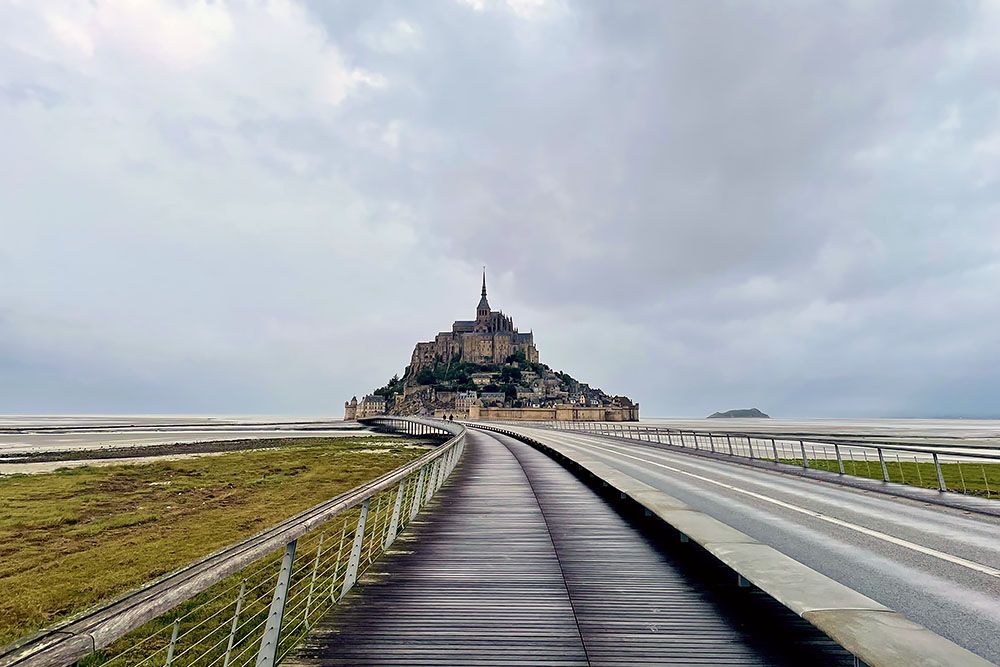
We did this cycling tour at the invitation of the Regional Tourism Office of Normandy, in collaboration with its partners in the La Manche department and the La Vélomaritime cycling route. We compiled the content of the blog independently and objectively based on our own impressions.
Practical tips for your cycling holiday along the Vélomaritime in Normandy
The Vélomaritime (EuroVelo 4) is a 1,500-kilometre cycling route along the coastline of Normandy and Brittany. The route officially starts in Roscoff in Brittany. From there, the Vélomaritime takes you along beautiful coastal landscapes to Dunkirk. You will pass beautiful sandy beaches, steep cliffs and idyllic bays but also quaint towns, picturesque villages and many historical sites.
A few cycling guides have been published containing more information on the routes of the stages. You can find them in the right-hand margin of this blog. While cycling, we used gpx files that you can download for free via the route planner. If you rent a bike, do bring your own holder for your phone or bike computer. And don't forget to take it off again at the end of the rental period!
Most of the Vélomaritime is on quiet, public roads. And on paths, exclusively for cyclists. The paths are less suitable for cyclists, as the surface is gravel on many paths! Is tour cycling your big hobby? Then hire a gravel bike.
The Vélomaritime consists of 36 stages of between 12 and 50 miles. Of course, you can also cycle several stages in one day. Or even spread one stage over two cycling days. This makes the route suitable for almost everyone. A few stages contain some tough climbs that require good cycling condition. These are still doable on an e-bike. Use the handy route planner on the official Vélomaritime site to plan a route that suits your cycling fitness.
The department of La Manche is located in western Normandy, bordering Brittany. The northern part of the department includes the Cotentin peninsula.
The official starting point of the route in the La Manche department is at Mont-Saint-Michel. This iconic island is located on the border of Normandy and Brittany. The starting point of the cycling holiday described in this blog is Cherbourg. From this port city, we cycled the route in reverse.
The best period for a cycling holiday through Normandy is from April to October. June to August are the driest months. But keep in mind that even then you have more chances of rain than in other regions of France.
Yes indeed! There are several companies that can transport your luggage to your next accommodation on the route. This is great because cycling with little luggage will relieve your calves and legs. Most of these companies offer the service for a certain part of the route. La malle postale, which we used, transports your luggage along the entire route.
Another way to organise things is through accommodations affiliated to "Accueil Vélo". Such accommodations offer not only luggage service (free or chargeable), but also other services. For example, they have covered and locked bicycle storage, as well as a complete bicycle repair kit. They have facilities to wash and dry clothes. And they have facilities to charge your e-bike.
In Normandy, the regional rail network (TER) is well developed. Provided there is space, you can take your bike for free. Nor do you have to dismantle it.
In Normandy, there are several bike rental companies where you can rent quality bikes. So, you don't necessarily need to bring your own bike. On the La Vélomaritime web page, you will find an extensive list of locations where you can rent a bike. You can often arrange for your bike to be delivered to the starting point of your route. And the same goes for picking up your bike. We hired our bike from Loc Vélo and were extremely satisfied with it. Good quality bike with all the trimmings (even panniers).
After a cycling day, you obviously need to replenish your energy reserves. In Normandy, you can do this excellently. The local cuisine is mainly based on fish and seafood, including sole, oysters and mussels. As well as dairy products. Several famous cheeses such as Neufchâtel and Pont-L'Evêque come from this region. But meat lovers are also well catered for in Normandy. Think lamb, creamy chicken and duck. Visiting Mont Saint-Michel? Then don't miss the "Omelette de la mère Poulard". And if Rouen is on your planned cycling route, you're in for a treat: in 2022, the city was voted "UNESCO Creative City for Gastronomy"!
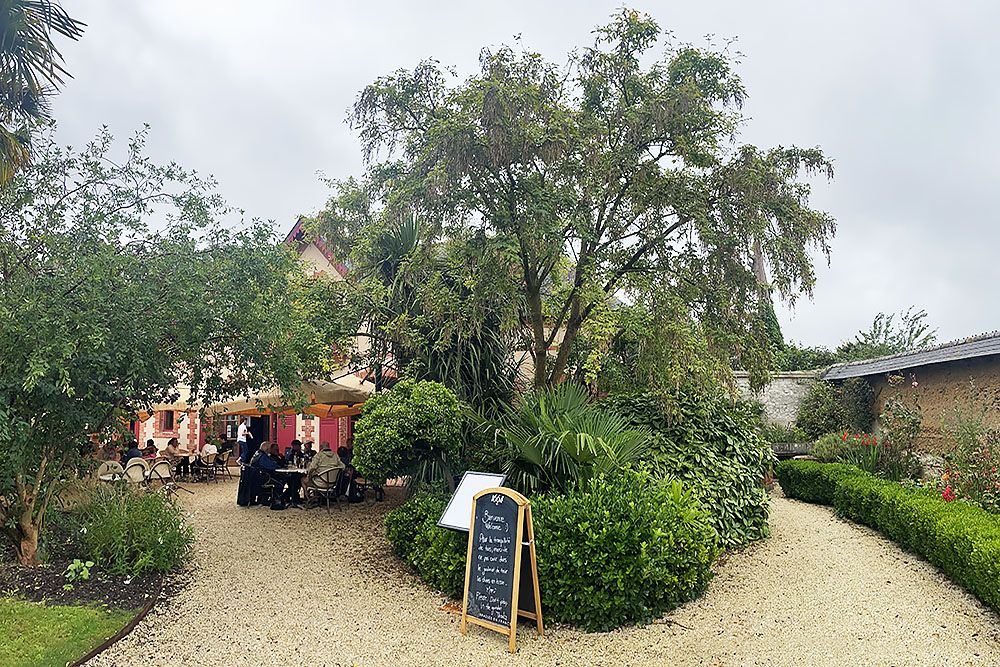
There are plenty of accommodation options available. From charming chambre d'hôtes and gîtes, to campsites and luxury hotels. There is something for everyone. Because of the extensive facilities of the "accueil vélo" especially for cyclists, our advice is to stay mainly at such accommodations. The accommodations are either on the cycling route or at most five kilometres away from it. Below we list the locations on our itinerary.
Cherbourg
- Accommodations with label "accueil vélo" around Cherbourg
- We stayed two nights at the Hôtel Moderna, a lovely quiet hotel in the middle of the old town and close to the marina. You get an extensive breakfast buffet there.
- Other accommodation near Cherbourg
Barfleur, Réville and Saint-Vaast
- Accommodation labelled "accueil vélo" around Réville
- We spent the night at Camping de Jonville (also accueil vélo) in an intimate little hut on stilts. If you like camping, this is a nice place. In fact, it is practically by the sea. And within walking distance you will find an awesome, trendy beach club! Remember to bring your own toilet paper and towel.
- Other accommodation near Barfleur, Réville and Saint-Vaast
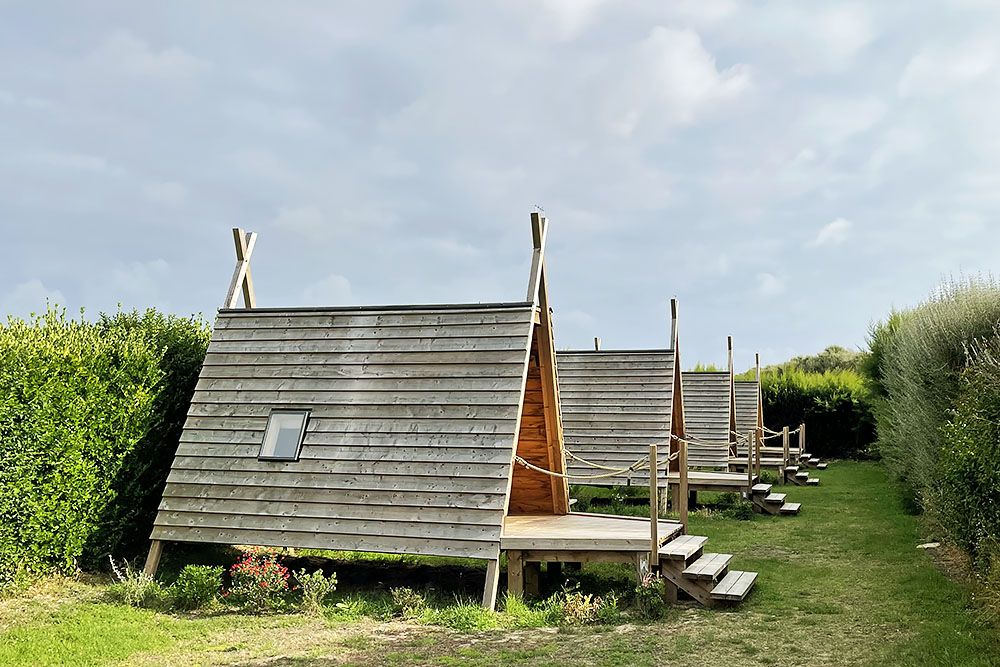
Carentan les Marais and Sainte-Marie-du-Mont
- Accommodation labelled "accueil vélo" around Carentan les Marais
- In Sainte-Marie-du-Mont, we had the most luxurious accommodation to choose from: Domaine de Utah Beach. Beautiful, stylish and extremely spacious rooms in an old manor house. We could eat a great meal in the mansion’s lively restaurant. A nice detail: most of the ingredients for the meals (even the meat) come from their own territory.
- Other accommodation near Carentan les Marais and Sainte-Marie-du-Mont
Pont-Farcy
- Accommodation labelled "accueil vélo" around Pont-Farcy
- Near Pont-Farcy, we stayed in a vibrant Chambre d'hôtes à la Ferme in the tiny village of Sainte-Marie-Outre-l'Eau. Friendly, cordial owners who speak only French! Their converted barn offers spacious rooms with even a sitting room!
- Other accommodation near Pont-Farcy
Mortain-Bocage
- Accommodation labelled "accueil vélo" around Mortain-Bocage
- In Mortain-Bocage we slept at chambre d'hôtes la Tour cachée. a fine and spacious accommodation with a full breakfast. Our host was very helpful and spoke good English!
- Other accommodation near Mortain-Bocage
Mont-Saint-Michel
- On the island itself, there are no accommodations with the "accueil vélo" label. However, these are located on shore.
- We stayed at Hôtel les Terrasses Poulard, bâtiment Ermitage. A fine room but the property itself (located just a bit more up the hill) needs some maintenance. If you book this hotel, specifically ask for a room with sea and shore views. From 8am, there is a sumptuous buffet breakfast on the first floor of La Mère Poulard's stylish restaurant.
- Other accommodation on or around Mont-Saint-Michel
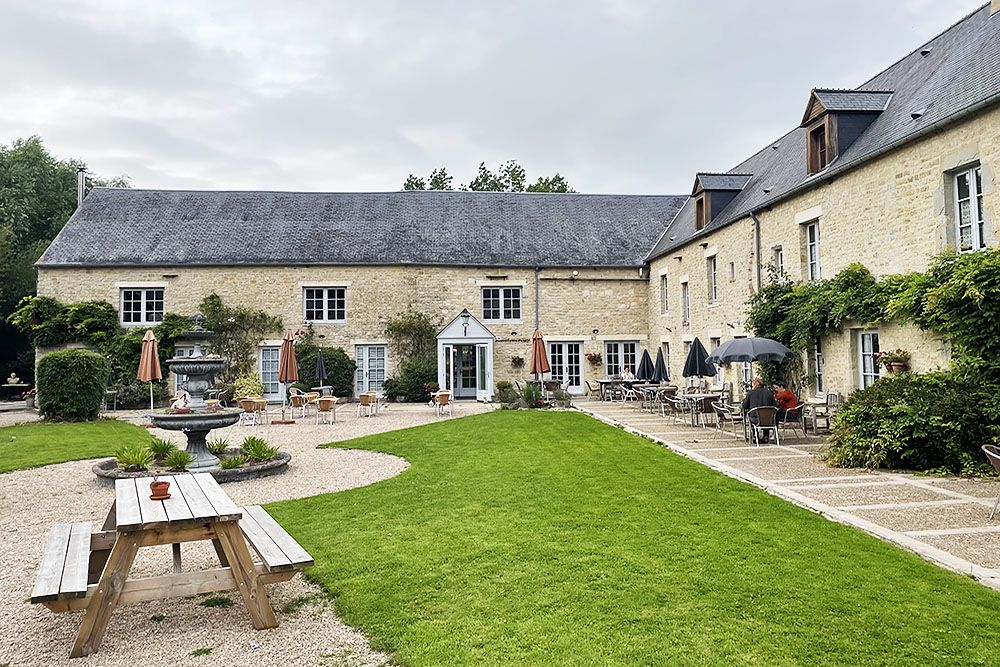
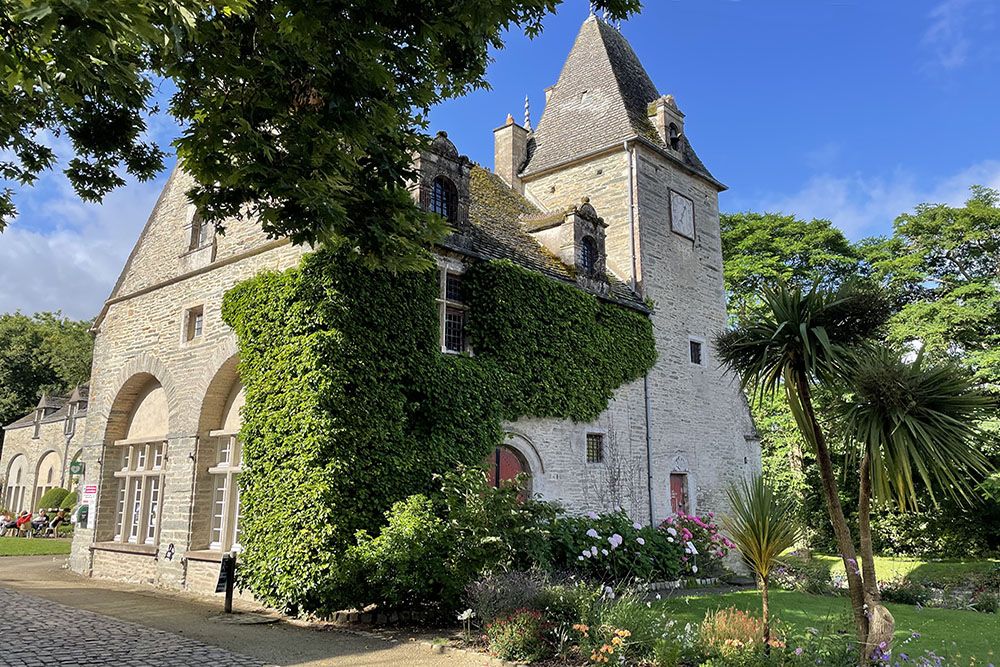
Other topics you may be interested in
- Normandy: historical sights and beautiful nature
- Mont-Saint-Michel, iconic island near Normandy
- Côte d’Albâtre in Normandy | the nicest villages
- City break to the historic port city of Cherbourg in Normandy
- Rouen in Normandy | highlights and travel tips

